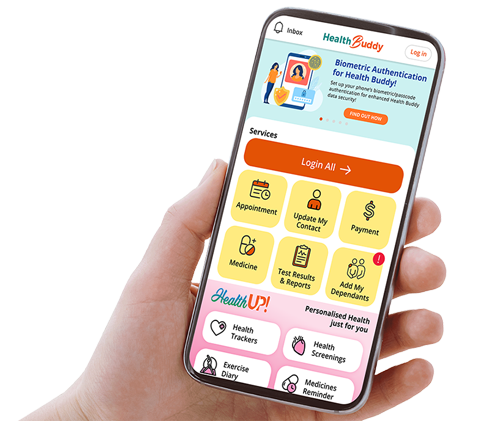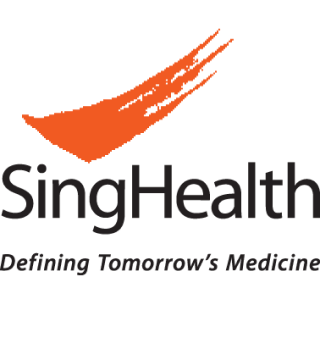Singapore National Eye Centre will NEVER ask you to transfer money over a call. If in doubt, call the 24/7 ScamShield helpline at 1799, or visit the ScamShield website at www.scamshield.gov.sg.
Myopia - Treatments Available
Atropine eye drops
Atropine eye drops have been used since 1970s to treat myopic progression. We have used it for over 20 years at the Singapore National Eye Centre.
- In general, there is a dose-related response (i.e., higher doses have greater effect)
- Lower doses cause much less pupil dilation and therefore less near blur and glare. Children on the very lowest doses often experience little or no side-effects. Children on higher dose may require glasses with a reading add and tint.
- The most common other side-effect is allergy (1-4%).
- Lower doses are also associated with less rebound effect when stopped, whereas those on high-dose atropine require a slow taper and should not be stopped suddenly.
- Many children will respond well to lower doses, but some need higher doses. 10% of children may have a poor respond to even the highest dose of atropine.
- Different children may also need different doses or dose frequency at different times of their lives.
| Low dose Atropine (0.01%, 0.025% and 0.05%) | Cost: SGD$15-30/mth Efficacy: 30-60% 20-30% started on 0.01% may benefit from higher dose, especially in younger children and high-risk families. |
Cons: Generally well tolerated but some children may experience near blur/glare. |
| Moderate dose Atropine (0.125%) | Cost: SGD$15-30/mth Efficacy: 30-60% |
Cons: Generally well tolerated but some children may experience near blur/glare with higher doses. Treatment should not be stopped suddenly. |
| High-dose Atropine (1%) | Cost: SGD$15-30/mth Efficacy: 60-80%, although 10% may still respond poorly |
Cons: Often need glasses with reading add and tint as children may experience near blur/glare. Treatment should not be stopped suddenly. |
Glasses
Different glasses options have been tried over time. In general, myopia-control glasses are
- Are safe and can be worn like standard single vision glasses
- Cost more than 'normal' glasses
- May have blur zones but usually well tolerated in children
| Progressive glasses have a graduated reduction in degree in the lower segment of lens. Similar to reading glasses used in older people. |  |
Cost: SGD$400 onwards (brand dependent) Efficacy: 0-10% Cons: Well tolerated in children but may have some blur/magnification when looking down (e.g., walking down steps). |
| Bifocal glasses have a separate area of lower degree at the lower segment of the lens with a definite line seen between the 2 segments. |  |
Cost: SGD$400 onwards Efficacy: 0-20% Cons: Obvious line in glasses with blur/magnification when looking down. |
| Peripheral defocus glasses with a clear rim of higher plus in the outer ring. |  |
Cost: SGD$400 onwards Efficacy: No effect Cons: Some blur/distortion when looking off center |
| Simultaneous myopic retinal defocus glasses with lenslets or microlenses creating myopic defocus or volume of defocus, and clear zones in between lenslets offer distance vision correction |  |
Cost: SGD$550 onwards Efficacy: 50-67% Cons: Some blur when off center. 10% may have a poor response. May be less effective in younger children or in those have eye misalignment. Effect unknown in children with high myopia/astigmatism. |
Note: there is no evidence that 'pin-hole' glasses or 'blue light blocking' glasses slow myopic progression
Contact lenses
Contact lens (CL) are corrective lens placed onto the surface of the eye and are worn to correct refractive errors instead of glasses or refractive surgeries. Contact lenses can have two main function in myopia: refractive correction and myopia control.
- 10-20% of children may not be able to tolerate wearing contact lenses.
- Contact lens users are at risks of complications including cornea (front surface of the eye) abrasions and infections of the cornea (infective keratitis).
- Symptoms of infection includes eye redness, eye pain, blurring of vision and white spots on the cornea. Severe infections can result in corneal scarring and affect vision.
- Likely less suitable for very young children or with children with sensitive eyes, recurrent lid infections and/or poor hygiene.
| Day time multifocal CL (with or without toric) have rings of increase plus within the lens. Daily disposable CL are generally safer, especially for long-term use in children. |  |
Cost: estimated SGD$170 -200/month or SGD$2000/year for daily disposable CL Efficacy: 50%. 10% may have a poor response. Works better in children aged ≥ 9 years old Cons: Limited refractive correction range |
| Night time wear orthokeratology CL (OrthoK lens or OK lens) are worn at night and works by reshaping the cornea so that glasses are not needed in the day. |  |
Cost: estimated SGD$2500 per pair Efficacy: 30-50% over 3-5 years. 10% may have a poor response Cons: - Limited refractive range - Highest infection risk because of overnight wear - Rebound may occur when stopped |
Note: please refer to page on proper care of contact lenses for more details on that subject
Combination therapy
Atropine can be used in combination with myopia control spectacle glasses, multifocal soft contact lenses or Ortho K lenses to supplement myopia control effect.
Learn more here:
Stay Healthy With
© 2025 SingHealth Group. All Rights Reserved.
















